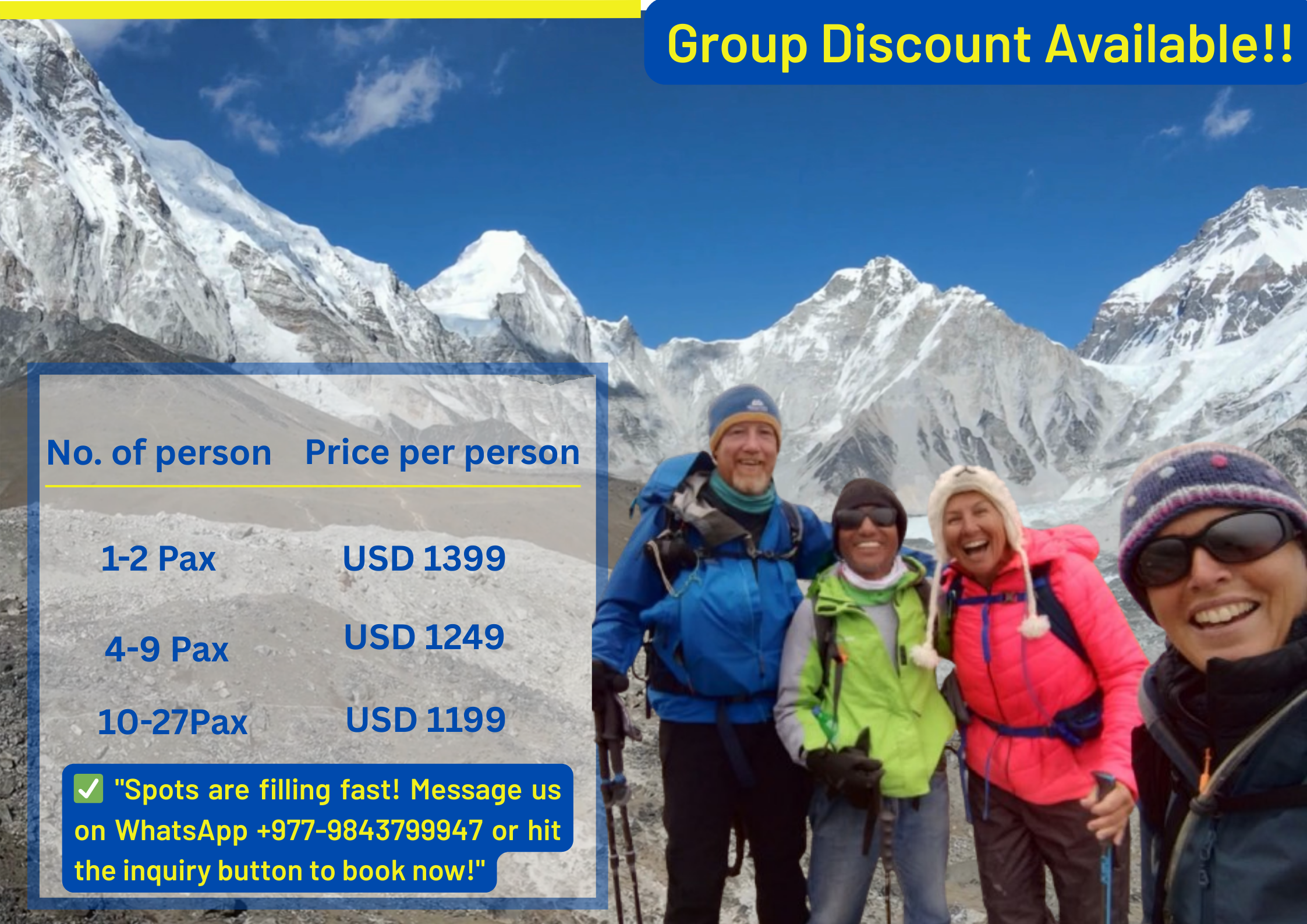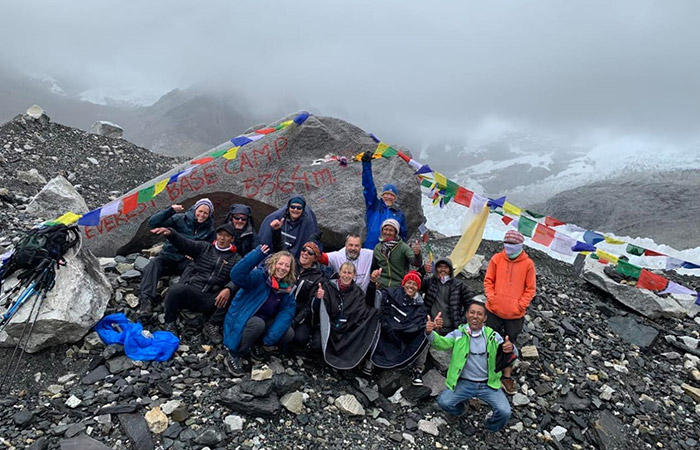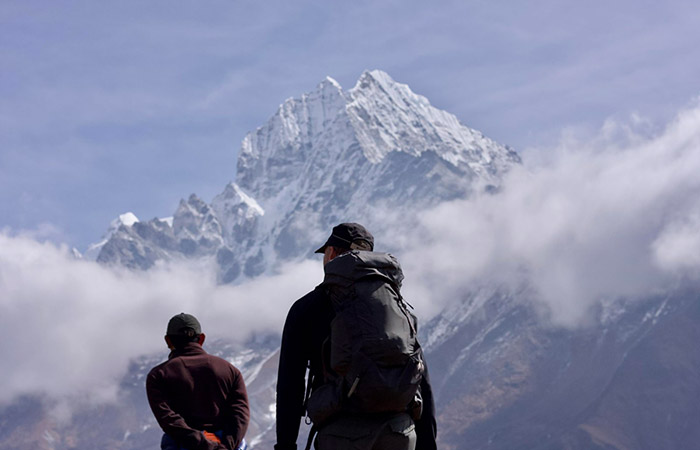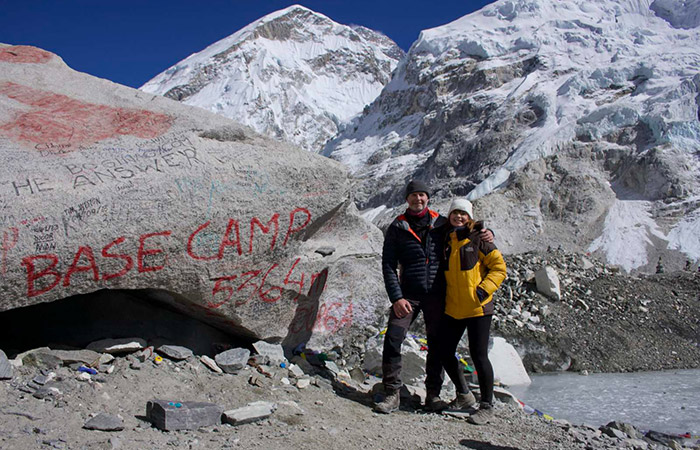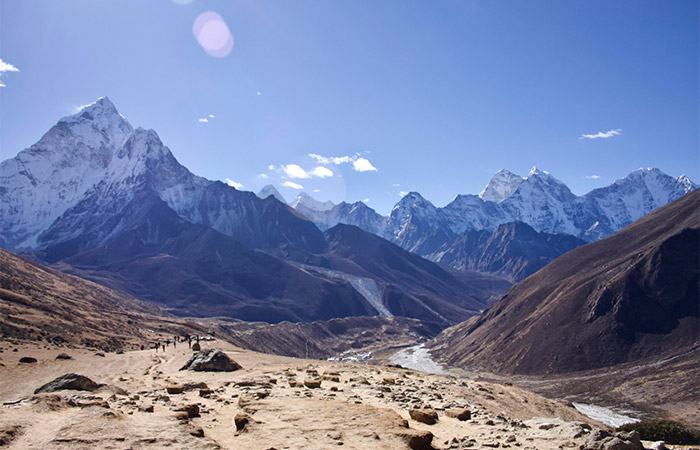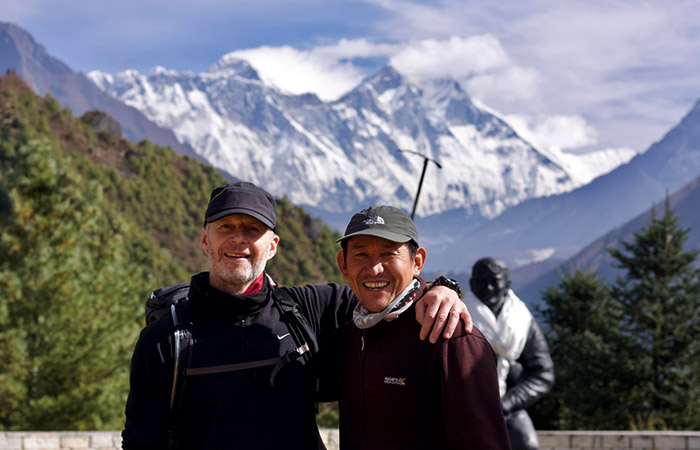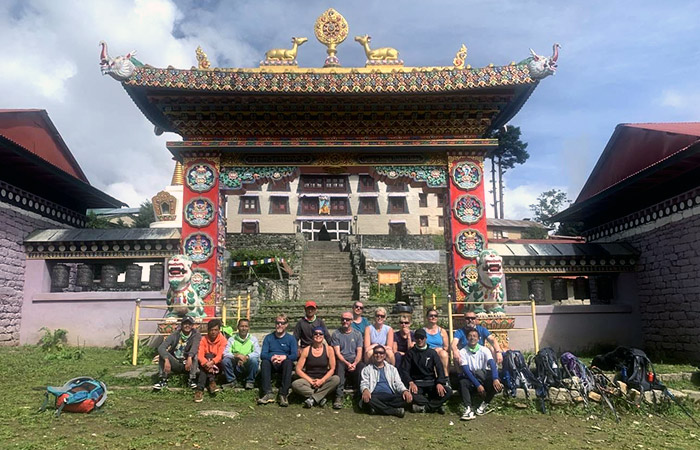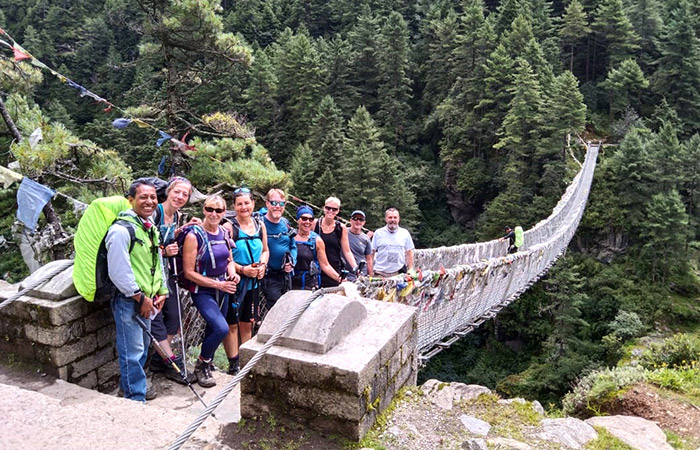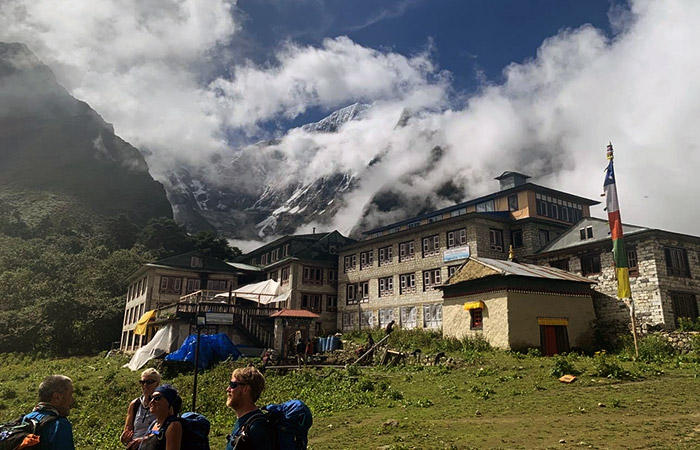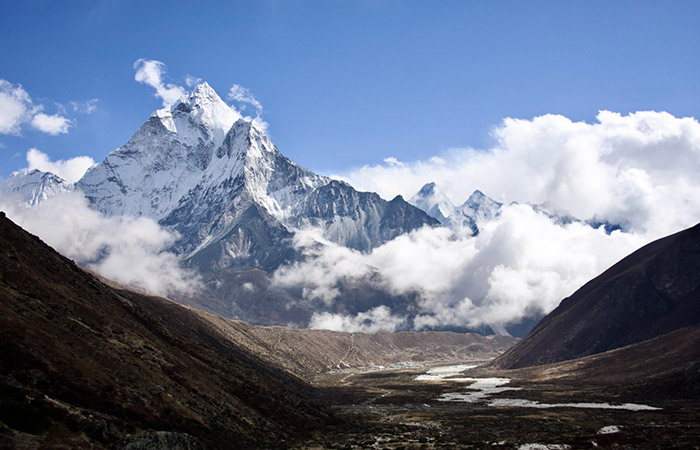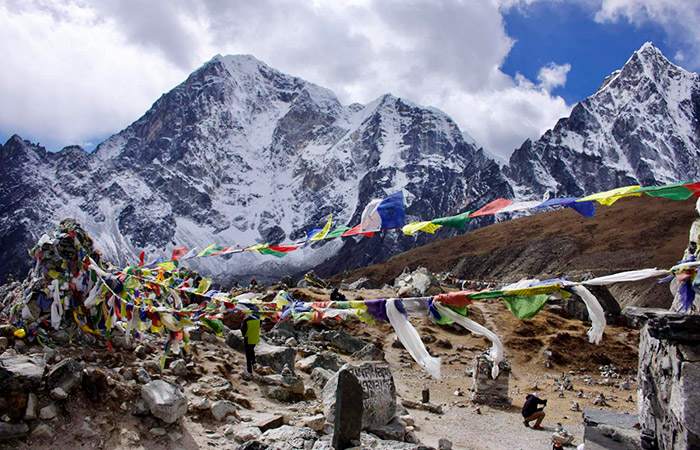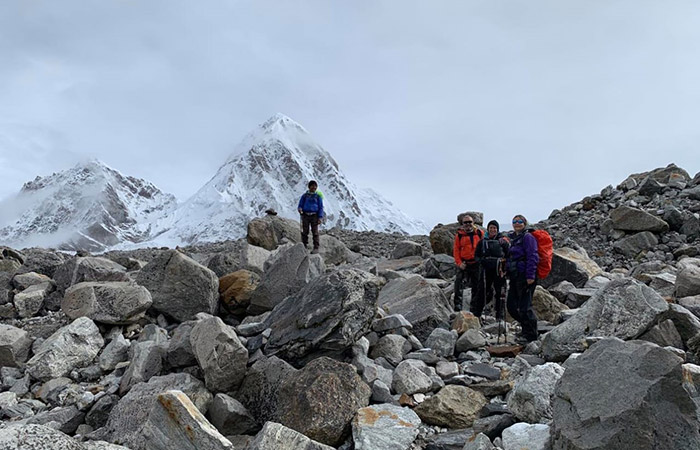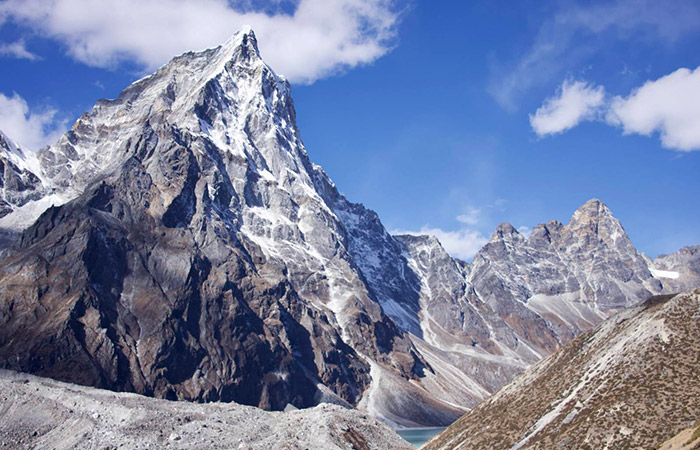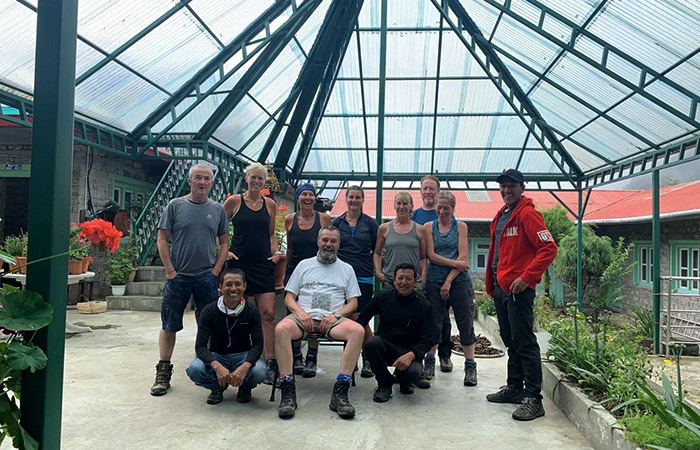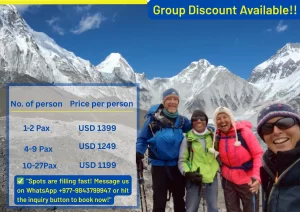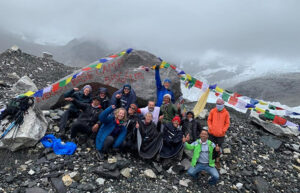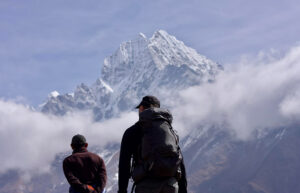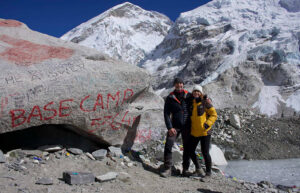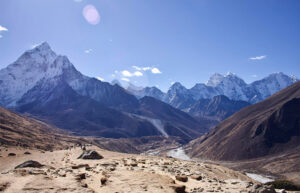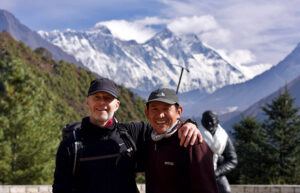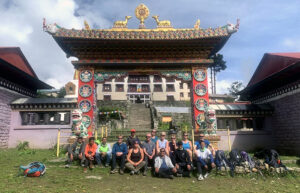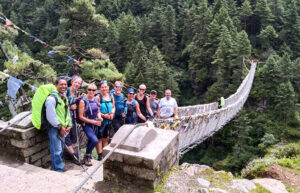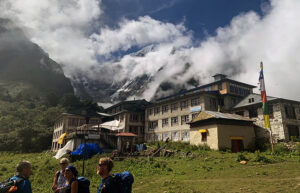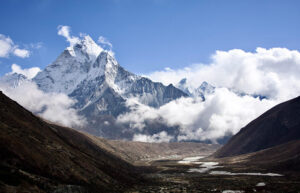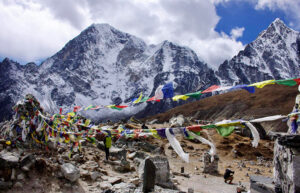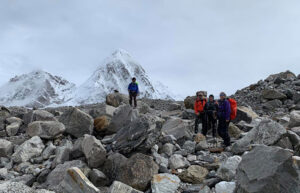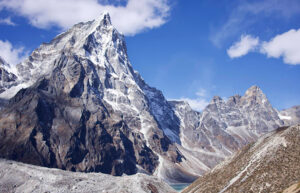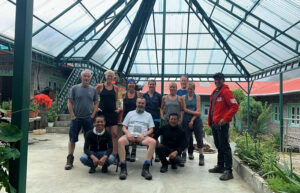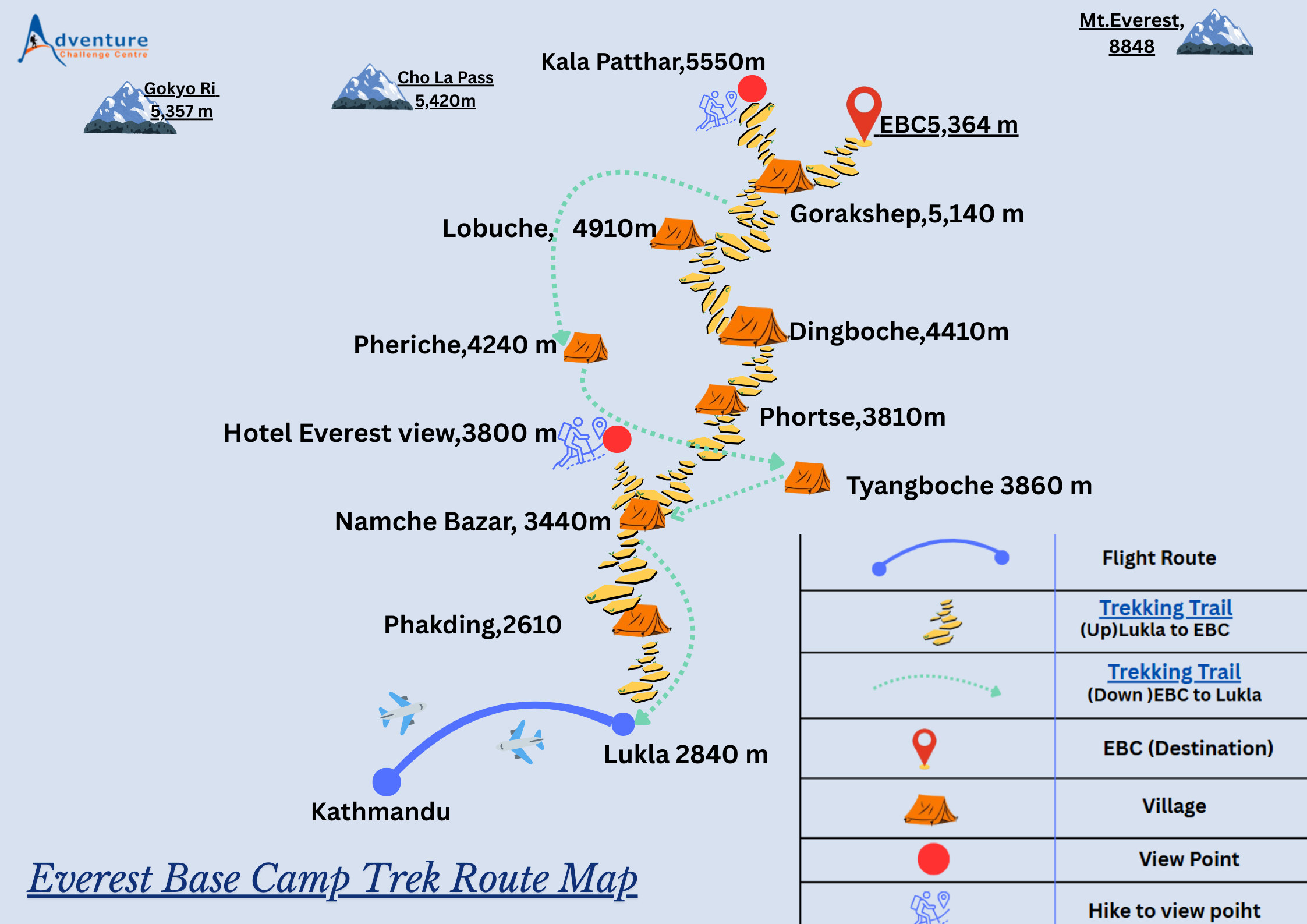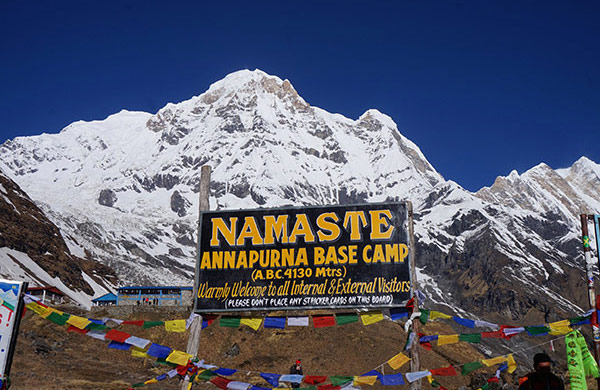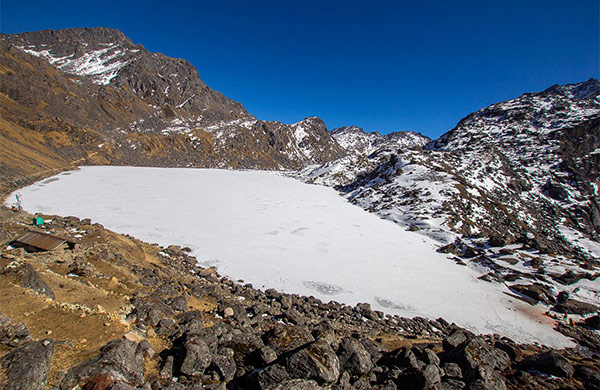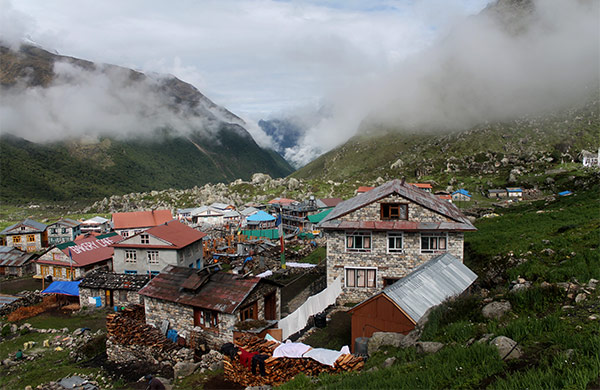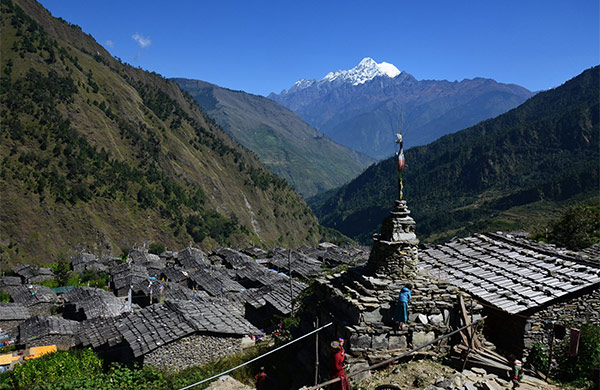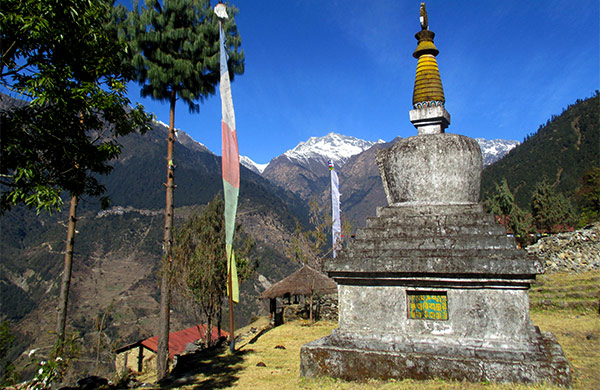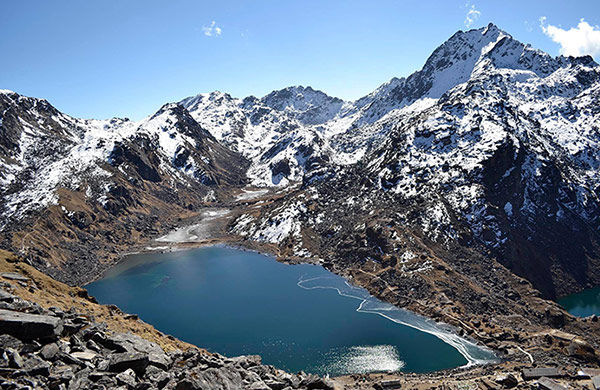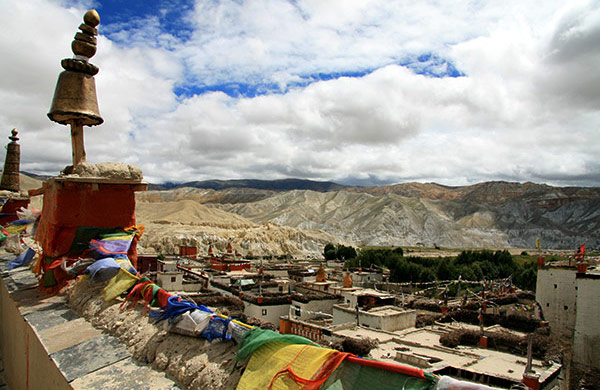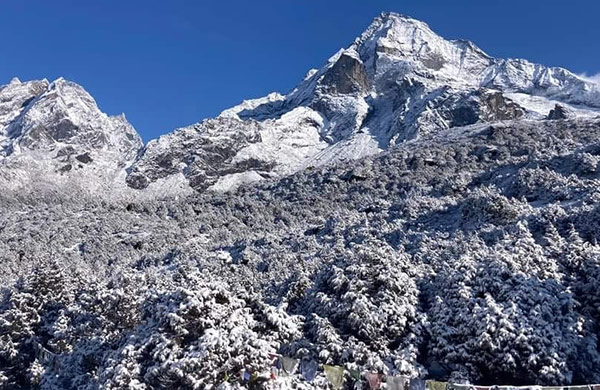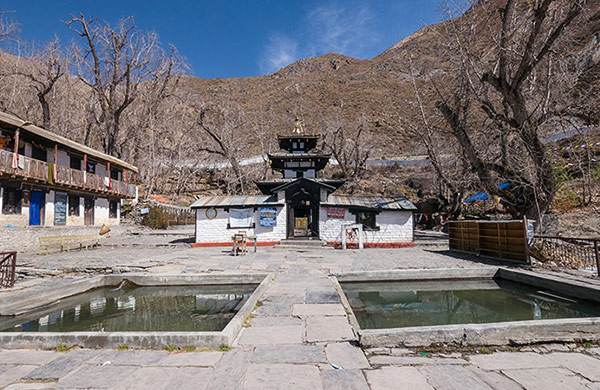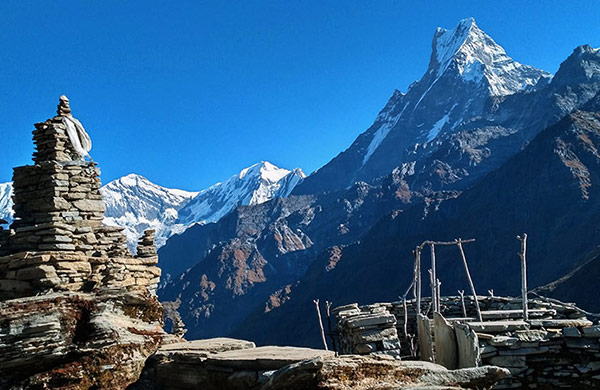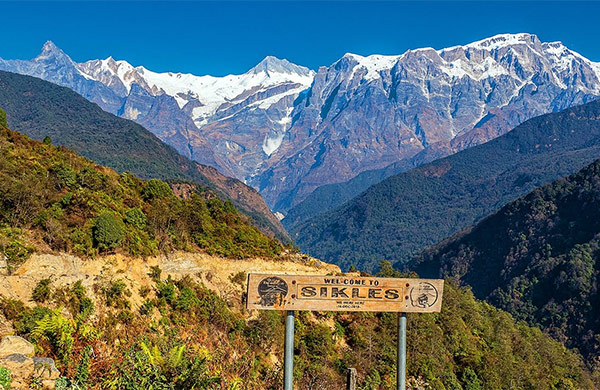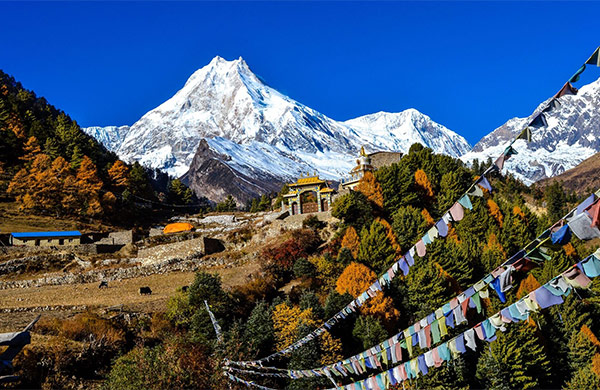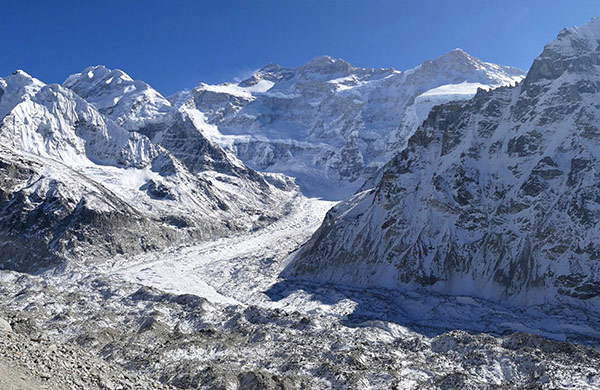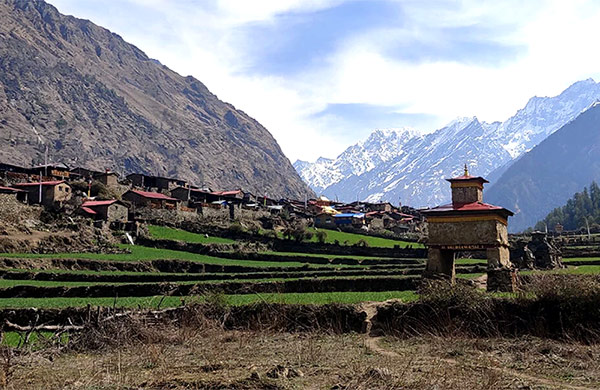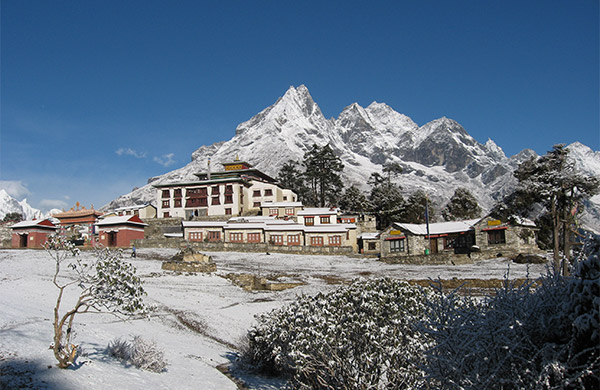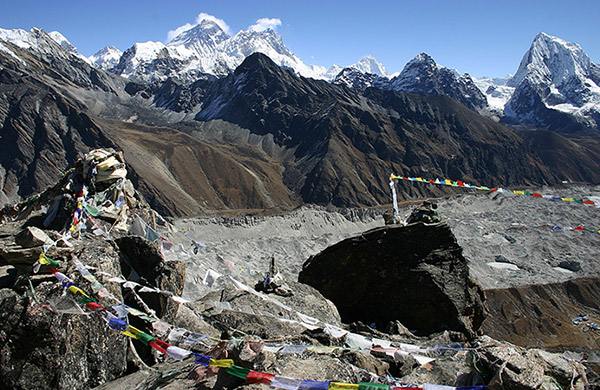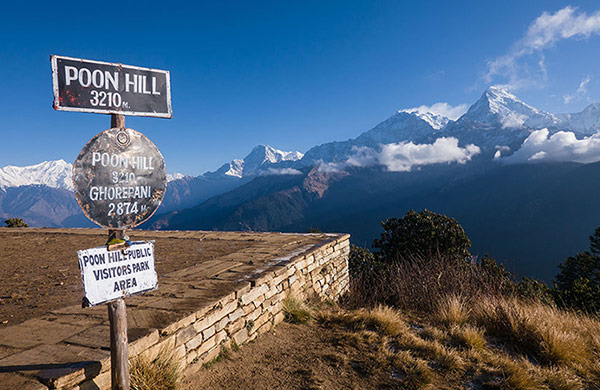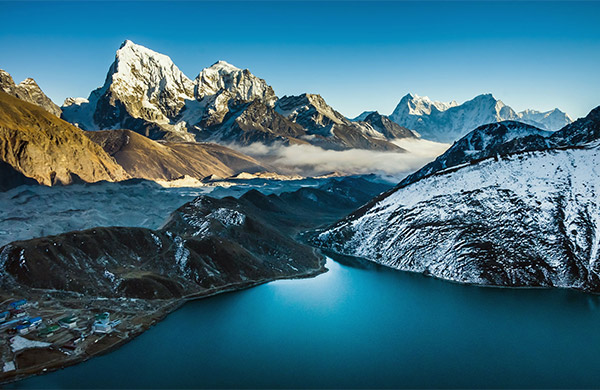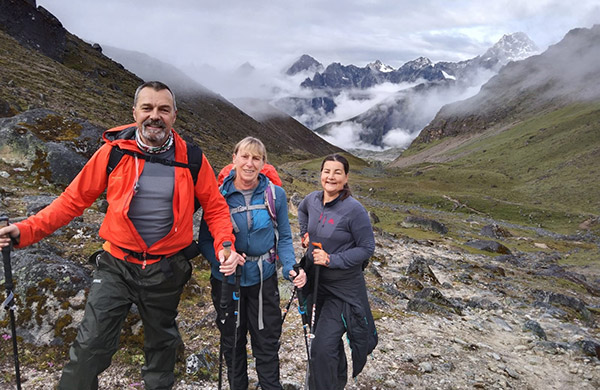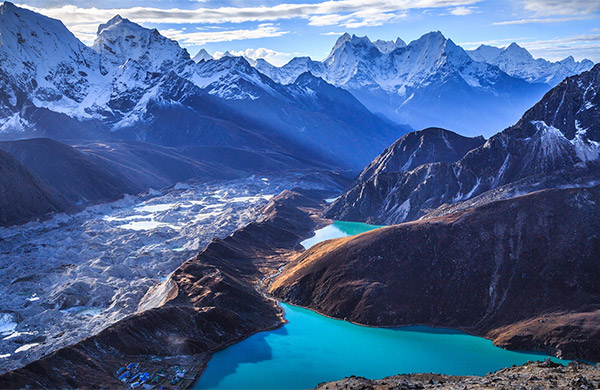Everest Base Camp
Everest Region
Excellent
5/5
Duration
14 days
Max. Altitude
5550m
Difficulty
Challenging
Best Season
Autumn / Spring
Transportation
Private Vehicle
Accommodation
Lodge During Trek
Starting Point
Kathmandu
Ending Point
Kathmandu
Overview
Embark on an Unforgettable Everest Base Camp Trek
The Everest Base Camp Trek is a must-do adventure for nature lovers and thrill-seekers. Experience stunning Himalayan landscapes, explore Sherpa villages, and visit Everest Base Camp (5,364m). Enjoy breathtaking sunrise views from Kala Patthar (5,550m), offering some of the best panoramas of Mount Everest and its peaks.
Explore Remote Trails of the Khumbu Valley
Our Everest Base Camp Trek takes you off the beaten path, exploring the lesser-traveled routes of the Khumbu Valley. Begin in Kathmandu, visiting UNESCO sites like Pashupatinath and Boudhanath before flying to Lukla (2,800m).
The trail winds through Sherpa villages, past waterfalls, and across suspension bridges draped in prayer flags. At Namche Bazaar (3,440m), the vibrant gateway to Everest, trekkers acclimatize while enjoying stunning views.
As you trek on, hidden villages like Thame, Khunde, and Khumjung offer a glimpse into Sherpa life, traditions, and their mountaineering legacy.
Journey Through the Imja Valley to Everest Base Camp
The trek ascends through the Imja Valley to Dingboche (4,410m), offering panoramic views of Lhotse, Ama Dablam, Nuptse, and Everest. From there, reach Everest Base Camp (5,364m) and enjoy a sunrise hike to Kala Patthar (5,550m) for unmatched views of Everest and surrounding peaks. The return journey takes a scenic route via Phortse village, offering a fresh perspective of the Himalayas before descending to Lukla.
Experience the Beauty of Sagarmatha National Park
This incredible journey unfolds within Sagarmatha National Park, a UNESCO World Heritage Site known for its biodiversity and pristine landscapes. While trekking, you might spot musk deer, Himalayan Tahr, and—if lucky—the elusive Snow Leopard or Red Panda.
As the seasons change, so does the scenery. Spring (March–May) transforms the trails with vibrant rhododendron blooms, while autumn (September–November) offers crisp air and crystal-clear mountain views. Along the route, Buddhist monasteries, mani walls, and prayer wheels enhance the journey with a sense of peace and spirituality.
Why Choose Our Everest Base Camp Trek?
Unmatched Trekking Experience – Enjoy a carefully designed itinerary that ensures proper acclimatization and comfort.
Expert Sherpa Guides – Our licensed guides bring years of experience in the Everest region.
Flexible Payment Options – Benefit from easy installment plans, making the booking process hassle-free.
Exclusive Early Bird Offers – Book early to receive free Kathmandu sightseeing and a pre-trek consultation.
Book Your Everest Base Camp Trek Today!
Whether you’re an adventure seeker, a culture enthusiast, or fulfilling a dream, the Everest Base Camp Trek offers an unforgettable experience.
📩 Ready to conquer Everest Base Camp? Book Now or message us on WhatsApp: +977-9843799947 for a free trek consultation!
For more travel inspiration, check out these useful resources:
🔗 Nepal Tourism Board – Official travel updates.
🔗 Sagarmatha National Park –Explore Sagarmatha National Park, a UNESCO-listed treasure in the Everest region. It boasts rich biodiversity and breathtaking landscapes.🔗 Weather Forecast for Everest Region –Stay informed with accurate weather updates. Plan your trek for a safe and enjoyable journey.
Departure Dates – Choose from a variety of dates that suit your schedule. Contact us for more information on upcoming treks!
24 Feb 2025 | 05 Mar 2025 | 16 Mar 2025 | 24 Mar 2025 | 06 Apr 2025 | 14 Apr 2025 | 25 Apr 2025 | 04 May 2025
And every week Sunday and Thursday
Itinerary
Day 01 :
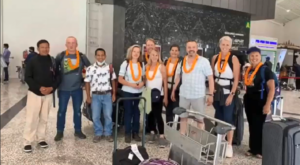
- Departure from Airport to Hotel:
-
Arrival at Tribhuvan International Airport (Kathmandu): Upon landing at the airport, you will be greeted by our representative who will assist you with your luggage and help you through the customs and immigration process.
-
Transportation Included: As part of the package, free transportation is provided from the airport to your hotel in a comfortable, private vehicle. Sit back and enjoy the scenic drive through Kathmandu’s bustling streets as you head to your accommodation.
Briefing Session:
-
Trek Briefing: After settling into your hotel, you will attend a trek briefing with your trek leader. During the briefing, the trek leader will provide you with essential information about the itinerary, safety measures, what to expect during the trek, and tips on how to prepare. You will also receive advice on what gear to pack and any other important details to ensure a smooth and enjoyable journey.
Explore Kathmandu:
-
After the briefing, enjoy the rest of the afternoon exploring the vibrant streets of Kathmandu. Our package includes free transportation for sightseeing, so you can visit key cultural and historical sites like:
-
Thamel, the heart of Kathmandu’s tourism district, perfect for shopping and local delicacies.
-
Swayambhunath Stupa (also known as the Monkey Temple), offering panoramic views of the city.
-
Durbar Square, a UNESCO World Heritage site, showcasing Kathmandu’s rich history and culture.
-
Enjoy the freedom to explore the city comfortably, knowing that your transportation is already taken care of.
Evening:
-
After a fulfilling day of exploration, return to your hotel for a restful night before your adventure truly begins. Take some time to relax and prepare for the exciting trek ahead.
Day 02 :
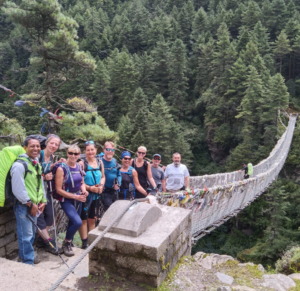
Begin your Everest adventure with a scenic 30-minute flight to Lukla (2,840m), offering breathtaking views of the Eastern Himalayas. Upon arrival, meet your trekking crew (porters & Sherpas) and prepare for the journey ahead.
🚨 Peak Season Travel Notice: During October, November, April, and May, flights to Lukla operate from Manthali, requiring a 4-5 hour drive from Kathmandu before the short flight.
Trek to Phakding (2,610m)
A gentle 3-hour trek leads through Sherpa villages, lush forests, and terraced fields, crossing the Dudh Koshi River via a suspension bridge. Phakding, a charming riverside village, offers comfortable teahouses and stunning scenery.
📍 Overnight at a teahouse in Phakding.
Day 03 :
-
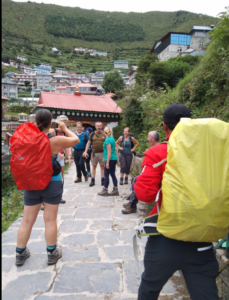
We start the day with light exercises before breakfast, a routine we will follow throughout the trek to prevent muscle cramps and fatigue. After a hearty meal, we begin our ascent towards Namche Bazaar, climbing approximately 800m over an 11 km trail.
The journey takes us through charming Sherpa villages such as Toktok, Benkar, Manjo, and Jorsale, each offering unique cultural insights. At Manjo, we officially enter Sagarmatha National Park, where our permits will be checked. The trail features several streams and five thrilling suspension bridges, including the iconic Twin Bridge at the foothill of Namche Bazaar. Until this point, the trek is relatively easy, but a steep one-hour uphill climb follows before reaching Namche.
A highlight of the day is the first glimpse of Mt. Everest, visible about 30 minutes before reaching Namche. Along the way, we also enjoy stunning views of Nuptse, Lhotse, Kusum Kanguru, Kwangde, and Thamserku.
📍 Overnight at a local Sherpa teahouse in Namche Bazaar.
Day 04 :
-
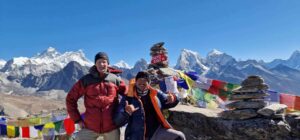
Today is a crucial acclimatization day, helping our bodies adjust to the increasing altitude and reducing the risk of altitude sickness. Instead of resting, we will embark on a scenic hike to the renowned Hotel Everest View (3,880m)—one of the world’s highest 5-star hotels—offering breathtaking panoramic views of Everest, Lhotse, Nuptse, Amadablam, Taboche, Cholatse, and Thamserku.
On our way back to Namche Bazaar, we will visit the Khumbu Museum, which provides insights into the history, culture, and lifestyle of the Sherpa people.
Explore Namche Bazaar
In the late afternoon or evening, you can explore Namche Bazaar, the commercial hub of the Khumbu region. Key highlights include:
✅ Sherpa Museum – Learn about the traditions and mountaineering history of the Sherpa community.
✅ Buddhist Monasteries – Experience the spiritual side of the Himalayas.
✅ Shops, Cafés, and Bars – Enjoy the vibrant market atmosphere.
✅ Hike to Khumjung Village (Optional) – A great way to explore authentic Sherpa culture, monasteries, and stunning mountain views.📍 Overnight at a teahouse in Namche Bazaar.
Day 05 :
-
-
Morning: Continue your journey towards Phortse, a picturesque village nestled high in the mountains.
-
Afternoon: The trek takes around 6 hours, offering spectacular views of Everest, Nuptse, and Lhotse along the way.
-
Evening: Settle into the peaceful village of Phortse, known for its spectacular scenery and quiet charm.
🔗 Read more about Phortse Village and its rich Sherpa heritage here.
-
Day 06 :
-
-
Morning: Begin your trek from Phortse to Pheriche, a village known for its stunning landscapes and high-altitude flora and fauna.
-
Afternoon: The trek will take about 7 hours, with views of Ama Dablam and surrounding peaks.
-
Evening: Relax in Pheriche, an excellent spot for acclimatization at this altitude.
-
Day 07 :
-
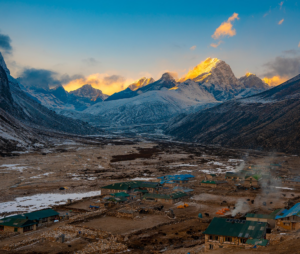
-
Morning: Acclimatize to the altitude by resting or exploring the area. This day is important for your health and safety.
-
Afternoon: Optional short hikes in the surrounding areas to improve acclimatization.
-
Evening: Enjoy a peaceful evening in Pheriche, with breathtaking views of the surrounding mountains.
-
Day 08 :
-
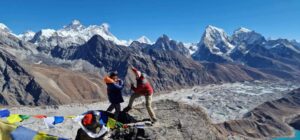
-
Morning: Trek to Lobuche, a high-altitude settlement at 4910m, known for its stark beauty and dramatic landscapes.
-
Afternoon: The trek takes about 5 hours, and the path offers stunning views of Everest and its neighboring peaks.
-
Evening: Rest in Lobuche, where you can enjoy the peaceful atmosphere of this high-altitude location.
Day 09 :
-
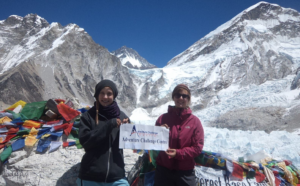
Day 9is an exhilarating and memorable day, as it takes you to Everest Base Camp and back to Gorak Shep. Here’s the breakdown:
Morning:
-
Trek from Lobuche to Gorak Shep (5,140m) – 4 hours:
-
After an early breakfast in Lobuche, you’ll start your trek to Gorak Shep. The trail is a relatively moderate but challenging ascent, with some rocky and icy sections.
-
You’ll be walking alongside the Khumbu Glacier, enjoying panoramic views of the surrounding peaks, including Nuptse, Pumori, and Everest in the distance.
-
The journey will take about 4 hours, so pace yourself and take regular breaks. As you approach Gorak Shep, you’ll begin to feel the altitude, so be mindful of how your body reacts.
-
Lunch:
-
Arrive in Gorak Shep:
-
Once you reach Gorak Shep, you’ll check into your teahouse and have a well-deserved lunch. This is a small, isolated settlement, and the air is quite thin here, so it’s important to rest and hydrate properly.
-
Afternoon:
-
Hike to Everest Base Camp (5,364m) – 2 and half hour
-
After lunch and a short rest, you’ll begin the final leg of the day’s adventure: trekking to Everest Base Camp. The round trip to the Base Camp is about 5 hours, and it involves a challenging hike over rocky and sometimes icy terrain.
-
The first section of the trek takes you across the rocky moraine, and as you get closer to Everest, the views become more breathtaking.
-
Upon reaching Everest Base Camp, you’ll be standing at the foot of the world’s highest mountain, surrounded by towering peaks. This is the culmination of your trek, and you’ll have the chance to take photos, soak in the incredible atmosphere, and feel the magnitude of the place.
-
Return to Gorak Shep:
-
After spending some time at Everest Base Camp, you’ll retrace your steps and return to Gorak Shep. The hike back will take another 2-3 hours.
Evening:
-
Upon returning to Gorak Shep, you’ll have the opportunity to relax, reflect on your incredible achievement, and enjoy a well-deserved dinner.
This day is filled with excitement, hard work, and the ultimate reward of reaching Everest Base Camp. Be sure to take your time, stay hydrated, and pace yourself as the altitude and physical exertion will make it a challenging but unforgettable experience!
-
Day 10 :
-
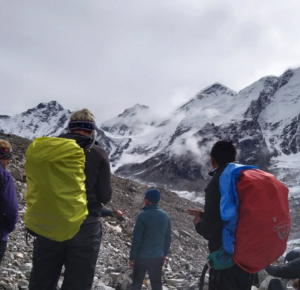
-
Morning: Rise early for a sunrise hike to Kala Patthar (5550m), the best vantage point for panoramic views of Mount Everest.
- Click here foramazing view from kalapathar
-
Afternoon: Trek down to Dingboche, a beautiful village set at a lower altitude, offering much-needed rest after the strenuous ascent.
-
Evening: Rest in Dingboche and take in the views of the surrounding peaks.
Day 11 :
-
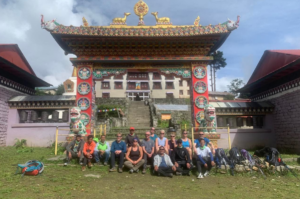
-
Morning: Trek from Dingboche to Tengboche (3860m), passing through dense forests and high-altitude meadows.
-
Afternoon: The trail takes you through the beautiful rhododendron forests, with views of Mount Everest and other peaks. The trek takes about 7 hours.
-
Evening: Visit the famous Tengboche Monastery, a significant cultural site for the Sherpa people, before settling into your lodge.
Day 12 :
-
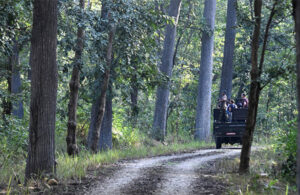
-
Morning: Trek from Tengboche back to Namche Bazaar.
-
Afternoon: The descent takes about 7 hours, passing through lush forests and offering great views of the Himalayas.
-
Evening: Arrive in Namche, relax, and enjoy some local treats or shopping.
Day 13 :
-
-
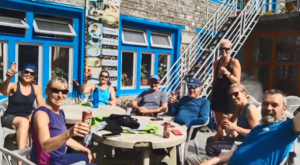
-
Morning: Continue your descent to Lukla, completing the trek after a rewarding journey.
-
Afternoon: The trek takes about 8 hours, and the terrain gradually becomes gentler as you approach Lukla.
-
Evening: Celebrate your adventure with your fellow trekkers and enjoy a farewell dinner in Lukla.
-
Day 14 :
-
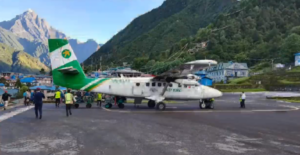
-
Morning: Catch an early morning flight from Lukla to Kathmandu, enjoying a final aerial view of the majestic Himalayas.
-
Afternoon: Arrive in Kathmandu and spend some free time exploring the vibrant city.
-
Evening: Relax and reflect on the amazing journey you’ve just completed.
-
Day 15
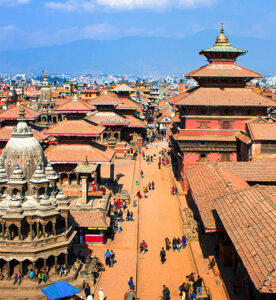
The last of your Nepal vacation going to end soon at Tribhuwan International Airport Kathmandu. Before heading to the airport we’ll come to pick you up at your hotel and Our Airport representative will take you to the Tribhuwan International Airport for the farewell.
About the above itinerary
This itinerary is just a suggestion and can be customized based on your preferences and fitness level. It is always advisable to trek with a licensed guide and to have a proper trekking permit before embarking on any trekking adventure in Nepal.
Included
✅ Airport Transfers: Convenient pick-up and drop-off services,(Including 2 times international and 2 times domestic airport pickup & drop)
✅Special offer package transportation for sightseeing in KTM
✅ Domestic Flights: Kathmandu-Lukla-Kathmandu airfare included.
✅ Accommodation in Kathmandu: 2 nights in a twin-sharing room at a comfortable hotel.
✅ Trekking Permits: All necessary permits for a hassle-free trek, Sagarmatha National Park Permit, Khumbu Rural Municipality Entrance Ticket .
✅ Experienced Trekking Guide: Professional, English-speaking guide for a safe and enjoyable journey,1 Assistant guide above 6 people (Including his salary, food, accommodation & insurance.
✅ Trekking Porter: Reliable porter service (one porter for two trekkers).
✅ Trekking Lodge Accommodation: Twin-sharing rooms in tea houses along the route.
✅ Meals Included: Nutritious vegetarian breakfast, lunch, and dinner during the trek.
✅ Trekking Staff Insurance: Full insurance coverage for guides and porters.
✅ First Aid Kit: Basic medical supplies for emergencies.
✅ Trekking Duffle Bag: Provided for carrying your essentials.
✅ Detailed Trekking Map: A professionally designed map to guide your adventure.
Excluded
❌ Nepal Visa & International Airfare: Nepalese visa fees and international flight costs.
❌ Excess Baggage Charges: Domestic flights allow a maximum of 15 kg; extra weight incurs additional fees.
❌ Meals in Kathmandu: Lunch and dinner in Kathmandu (except those mentioned in inclusions).
❌ Personal Insurance: Travel, medical, and emergency evacuation insurance.
❌ Beverages: Soft drinks, alcoholic beverages, and bottled water.
❌ Additional Services: WiFi, mobile charging, hot showers, and any other extra services.
❌ Tips & Gratuities: For trekking guides, porters, and support staff.
Frequently asked questions
Trekking to Everest Base Camp is a once-in-a-lifetime adventure! It takes you through stunning landscapes, traditional Sherpa villages, ancient monasteries, and breathtaking mountain vistas. Standing at the foot of the world’s highest peak is an achievement that every trekker dreams of.
The trek is moderately challenging and requires a good level of fitness. You’ll be walking 5–7 hours per day at high altitudes. However, with proper acclimatization, a steady pace, and the right preparation, most trekkers successfully complete the journey.
While prior trekking experience is helpful, it’s not mandatory. Many first-time trekkers have successfully reached Everest Base Camp with proper training and preparation. We recommend cardiovascular exercises, endurance training, and short hikes before the trek.
The standard trek takes 12 to 14 days, including acclimatization days in Namche Bazaar and Pheriche. We prioritize your safety and ensure enough time for your body to adjust to the altitude.
The best seasons are:
✅ Spring (March–May): Clear skies, blooming rhododendrons, and moderate temperatures.
✅ Autumn (September–November): Crisp mountain views, stable weather, and a vibrant trekking atmosphere.
Avoid the monsoon (June–August) due to heavy rainfall and winter (December–February) due to extreme cold.
You’ll need:
✔️ Sagarmatha National Park Entry Permit
✔️ Khumbu Pasang Lhamu Rural Municipality Permit
Our team will arrange all necessary permits for you!
Everest Base Camp sits at 5,364 meters (17,598 feet). Altitude sickness is a concern, but our itinerary includes gradual acclimatization to minimize risks. We follow the “climb high, sleep low” principle and carry oxygen and first-aid kits. To know Action Guide to High Altitude: Acclimatization and Illnesses click here
You’ll stay in cozy teahouses that offer comfortable beds and delicious meals. Expect hearty meals like dal bhat, momos, pasta, soup, and pancakes—perfect for keeping your energy up! Hot drinks and boiled water for refilling bottles are available.
TEAHOUSE COSTS
The following approximate costs were correct at time of writing, though varied slightly from teahouse to teahouse:
Shower – 500 – 600 NPR
WiFi – 500NPR (Unlimited – valid up to 12 hours)
Electricity – 250NPR (Per charge)
Soft Drink – 400-500 NPR
Mango Juice – 300 – 400 NPR
Porridge – 500 NPR
Daal Bhaat – 600 -1000 NPR
Here’s a must-have gear checklist:
✅ Warm layers & down jacket (for cold nights)
✅ Waterproof jacket & pants (for unexpected weather)
✅ Sturdy trekking boots (well-broken-in)
✅ Sleeping bag (rated -10°C to -20°C)
✅ Trekking poles (reduce knee strain)
✅ Sunglasses & sunscreen (for strong UV rays)
✅ Water bottles & purification tablets
✅ First aid kit & altitude sickness meds
Yes, but connectivity is limited. Most teahouses offer Wi-Fi for a small fee and charge extra for battery charging. We recommend bringing a power bank and a local SIM card (Ncell or Everest Link) for better connectivity.
WiFi – 500NPR (Unlimited – valid up to 12 hours)
Electricity – 250NPR (Per charge)
You can trek solo, but having an experienced guide ensures safety, navigation, and cultural insights. Plus, porters help lighten your load so you can enjoy the journey stress-free!
Your safety is our priority. In case of emergencies, we arrange immediate helicopter evacuation (travel insurance required). Our guides are trained in first aid and altitude sickness management.
Yes! Travel insurance covering high-altitude trekking and emergency helicopter evacuation is mandatory. We can recommend trusted insurance providers.
📩 Booking is Simple!
✅ Direct Message us on WhatsApp: +977-9843799947
✅ Hit the Inquiry Button to book—our team will reach out shortly!
We’ll assist you with trip planning, booking, pre-trek consultation, and all necessary preparations for a hassle-free experience. Let’s make your Everest adventure seamless and unforgettable!
Getting a Nepal visa on arrival is quick and easy for most nationalities. Here’s a step-by-step guide:
1. Check Your Eligibility
Nepal offers visa on arrival for most travelers except for citizens of a few restricted countries (e.g., Afghanistan, Cameroon, Ghana, Nigeria, Somalia, and a few others). If you’re from one of these restricted countries, you must apply for a visa at a Nepalese embassy before arriving.
2. Arriving at Tribhuvan International Airport (TIA) – Kathmandu
Once you land at Tribhuvan International Airport (TIA) in Kathmandu, follow these steps:
✔ Step 1: Fill Out an Arrival Form – Use the electronic kiosk machines available at the airport or fill out a manual visa application form.
✔ Step 2: Pay the Visa Fee – Head to the visa payment counter and pay in USD, Euro, GBP, or other major currencies. (Credit cards are usually NOT accepted, so carry cash.)
✔ Step 3: Submit Your Documents – Take your payment receipt, completed form, and passport to the Immigration Desk, where your visa will be stamped into your passport.
3. Visa Fees & Duration
Nepal’s visa fees (as of 2025):
🔹 15 Days – $30 USD
🔹 30 Days – $50 USD
🔹 90 Days – $125 USD
(Fees may be subject to change, so verify before travel.)
4. Required Documents
✅ Passport (valid for at least 6 months)
✅ Passport-sized photos (recommended, but photo booths are available at the airport if needed)
✅ Visa fee (in cash, preferably USD or major currency)
5. Getting a Visa at Land Borders
If you enter Nepal via a land border (from India, Tibet/China), you can also get a visa on arrival at official border crossings such as:
✔ Sunauli (from India)
✔ Raxaul/Birgunj (from India)
✔ Kakarbhitta (from India)
✔ Kodari/Rasuwa (from Tibet/China)
6. Extending Your Visa
If you wish to stay longer, you can extend your visa at the Department of Immigration in Kathmandu or Pokhara. The cost is $3 per day of extension, with a minimum fee of $30 for 10 days.
Pro Tip: If you’re trekking in Nepal for an extended time, we recommend getting a 30-day or 90-day visa upfront to avoid hassles later. For more information click here
1. Best Time to Trek
📅 Spring (March–May): Clear skies, blooming rhododendrons, and great weather.
📅 Autumn (Sept–Nov): Best visibility and stable conditions.
⚠️ Monsoon (June–Aug) & Winter (Dec–Feb) are less ideal due to rain and extreme cold.
2. New Trekking Regulations & Permits
🆕 Guide Mandatory: Solo trekking is NOT allowed—guides are required.
🛂 Permits Needed:
✔ Sagarmatha National Park Entry – NPR 3,000
✔ Khumbu Pasang Lhamu Permit – NPR 2,000
3. Trekking Routes & Alternatives
🏔 Classic EBC Route – The most popular trek.
🌊 Gokyo Lakes & EBC – Scenic detour via stunning glacial lakes.
🚀 Three Passes Trek – A challenging adventure for experienced trekkers.
4. EBC Trek Cost (2025-2026)
💰 Budget: $1,200 – $2,500 per person.
💳 Flexible Installment Plans Available!
5. Flights to Lukla (Important Update)
✈ Peak season flights now operate from Ramechhap, NOT Kathmandu – Requires a 4-hour drive before the flight.
6. Accommodation & Food
🏠 Teahouses & Luxury Lodges available.
🍽 Food: Enjoy dal bhat, momos, pasta, soups & more.
🔋 Wi-Fi & Charging at extra cost ($2–$5 per device).
7. Altitude Sickness & Safety
🌡 Acclimatization Days: Namche Bazaar & Pheriche included.
🚁 Helicopter Evacuation Ready – Travel insurance required.
8. 2025-2026 Special Offers & Discounts
- Early Bird Offer
-
Free Pre-Trek Prep Consultation Call to help you get ready.
-
Free Kathmandu Sightseeing Transportation Service before your trek.
- Group Discounts – Traveling with friends or family? Enjoy exclusive group discounts!
📩 Book Now and make your Everest adventure even more rewarding!
👥 Group Discounts
📩 Book Now and start your Everest adventure!
A porter is assigned to two trekkers. This is the normal trend for the trek in Nepal. He or she carries a maximum of 20 kg – 25 kg. Please remember that Lukla’s flight weight restriction in baggage per passenger is 10 kg besides hand carry.
You need to send the advance deposit of 20 % of the trip cost for the confirmation of the trekking. The deposit will not be refunded in case the trekker cancels the trip themselves. However, the agency has the provision of the same amount to be used by the trekker for the next trip. In case of full payment, if a trekker cancels the trekking one month prior to the trek date, 50% of the total cost will be refunded.
💧 Recommended Water Intake:
✔ 3-4 liters per day to stay hydrated and prevent altitude sickness.
✔ Drink small amounts frequently instead of large gulps.
✔ Use water purification tablets or filters for safe drinking water.
Why Is Hydration So Important?
✅ Prevents Altitude Sickness – Dehydration can worsen symptoms like headaches and dizziness.
✅ Boosts Energy & Endurance – Helps your body adjust to lower oxygen levels.
✅ Regulates Body Temperature – Essential for trekking in varying temperatures.
✅ Aids Digestion & Circulation – Keeps you feeling strong and prevents fatigue.
🚫 Avoid alcohol & excessive caffeine as they cause dehydration.
💡 Pro Tip: Carry an insulated bottle to keep water warm at higher altitudes! 🚀🏔
💰 Recommended Extra Cash: $200 – $300 USD per person for personal expenses.
Breakdown of Personal Expenses:
✔ Charging & Wi-Fi: $2–$5 per device per day.
✔ Hot Showers: $3–$10 per shower.
✔ Extra Snacks & Drinks: $2–$5 per item (tea, coffee, chocolate bars, etc.).
✔ Souvenirs & Tips: $30–$50 for tipping guides/porters.
✔ Emergency Cash: For flight delays or unexpected expenses.
💡 Pro Tips:
✅ Carry Nepalese Rupees (NPR) – ATMs are unreliable beyond Namche Bazaar.
✅ Smaller denominations are better for easy transactions.
✅ Cash is king! Cards are rarely accepted in remote areas.
📌 Plan wisely & enjoy a hassle-free trek! 🏔💰

